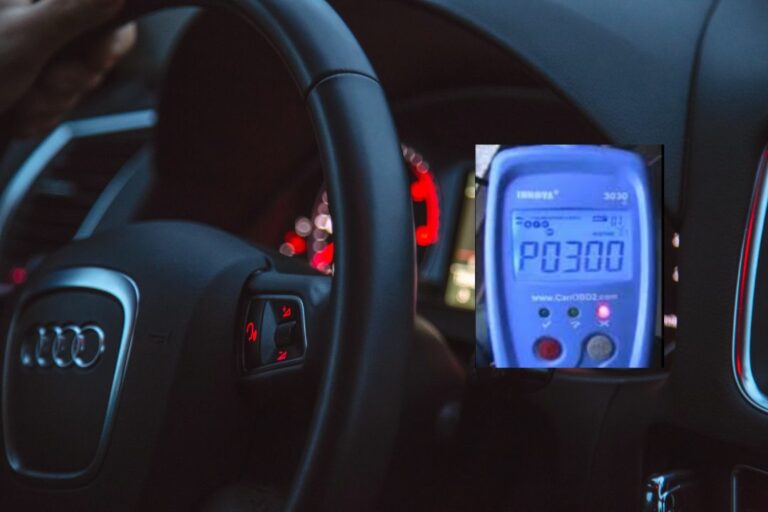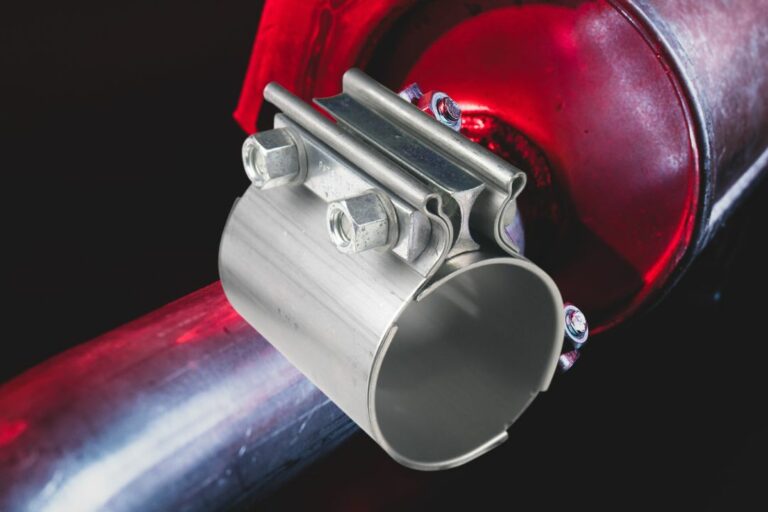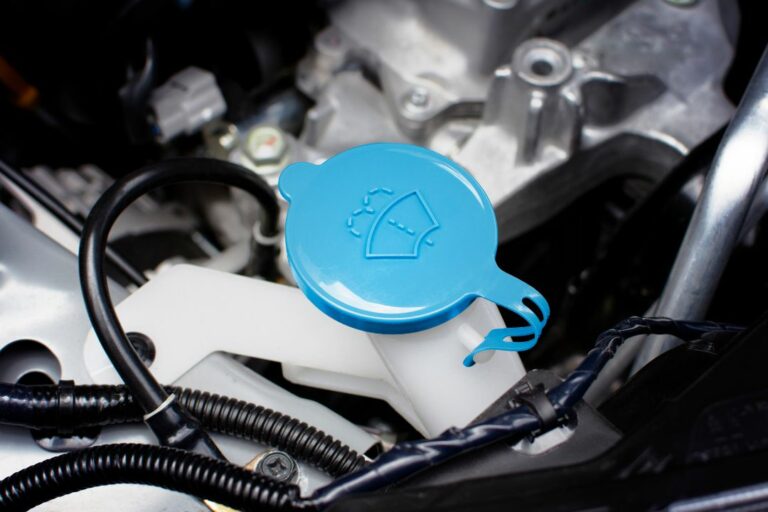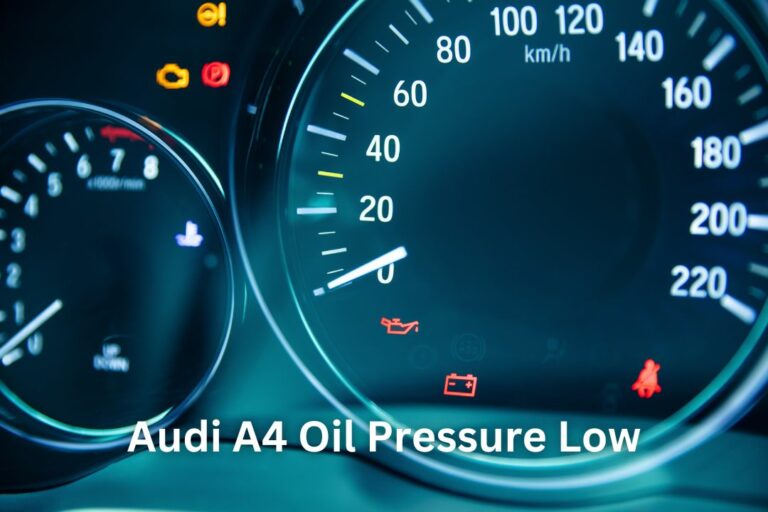2mm Brake Pads Left (Should You Drive? How Far Can You Go?)

You’re cruising down the highway with your windows down and your music blasting when suddenly, you hit the brakes.
But instead of coming to a smooth stop, you feel a grinding sensation and hear an unsettling noise.
You start to panic – what’s wrong with your car? After some inspection, you realize that your brake pads are worn down to just 2mm.
You know it’s time for new ones but how long can they last before needing replacement? Should you trust the dealership’s recommendation? And most importantly, can driving with 2mm brake pads be dangerous?
In this article 2mm Brake Pads Left, we’ll go over all the facts so that you can make an informed decision on when and where to get new brake pads installed. Don’t let fear or doubt control your safety behind the wheel!
What does 2mm brake pads mean?
If you found out that your brake pads have 2mm of thickness remaining, it means that they’re pretty worn out. Most cars have a minimum brake pad thickness of 1mm, and at 2mm they are considered to be close to or below the manufacturer’s minimum specification for replacement.
Although driving with rear brakes at this level may be safe for a few thousand miles at most, keep in mind that front brakes do about 80% of the braking on a vehicle.
This is why it’s important to check the condition of both front and rear brakes regularly.
You can take a look at your service manual to find the minimum thickness requirements for your specific make/model.
How long do brake pads last?
One of the most important things to know about brake pads is how long they can last.
The answer to this question depends on several factors, such as the type of driving you do, the location where you drive your vehicle, and the quality of your brakes.
Typically, brake pads can last anywhere from 30,000 to 70,000 miles or more. However, this estimate is highly dependent on driving habits and conditions.
If you are someone who frequently drives in stop-and-go traffic or lives in a hilly area where you rely heavily on your brakes for braking performance, then your brake pads may wear down faster than average.
On the other hand, if you mostly drive on highways with little need for heavy braking, then your brake pads may last longer than usual.
Regardless of how many miles you have driven since their replacement or what kind of driving conditions you face regularly—when there is only 2mm remaining—the manufacturer specifies it’s time to replace them to avoid risking major damage to other parts by reducing braking performance that could lead to accidents.
Can I still drive my car with 2mm brake pads?
Driving with 2mm brake pads can be dangerous, as they are close to or below the manufacturer’s minimum specification for replacement.
While it may be safe for a few thousand miles at most, it’s important to get them replaced as soon as possible to avoid risking major damage to other parts and reducing braking performance that could lead to accidents.
Safety First:
When it comes to your brakes, safety should always be your top priority. If you suspect that your brake pads are worn down to just 2mm, don’t wait to get them replaced.
Driving with worn-out brake pads can lead to reduced braking performance, which could cause accidents and put your safety at risk.
Consult your service manual, get professional assistance, and make an informed decision on when and where to get new brake pads installed. Don’t let fear or doubt control your safety behind the wheel!
Understanding Brake Pad Wear:
Understanding brake pad wear is important to know when you’re checking your brakes for safety purposes.
Brake pads are designed to gradually wear down over time and through regular use. The thickness of the brake pad material is a key indicator of how much life remains in the part.
Typically, brake pads have a minimum thickness specified by the vehicle manufacturer that indicates when it’s time for replacement.
This can vary depending on the make and model of your car, so it’s essential to consult the service manual or speak with a professional mechanic if you’re unsure.
If you continue driving with worn-out brake pads, it can affect your ability to stop quickly or safely while driving, especially during emergency braking situations.
It’s recommended that front brakes be replaced at 3mm-4mm and rear brakes at 2mm-3mm for ideal wear resistance and fade resistance.
Remember that proper maintenance and inspection can help extend the life of your brake pads.
Keeping an eye on their condition and getting them replaced before they become dangerously thin is an important part of keeping yourself, your passengers, and other drivers safe on the road.
How far can you drive on 2mm brakes?
Driving on 2mm brake pads can be dangerous and it’s recommended to get them replaced as soon as possible.
While it may be safe for a around 30–40 miles on 2mm brakes at most, it’s important to understand that front brakes do about 80% of the braking on a vehicle and driving with worn-out brake pads can reduce braking performance and increase the risk of accidents.
The distance you can drive on 2mm brake pads will depend on various factors such as the type of driving you do and the quality of your brakes, but it’s always better to err on the side of caution and prioritize your safety by getting them replaced as soon as possible.
What Happens When Your Brake Pads Wear Down to 2mm?
When your brake pads wear down to 2mm or less, it’s a sign that they need to be replaced. At this point, you’re running the risk of damaging your rotors and compromising your vehicle’s braking ability.
| Risk | Description |
|---|---|
| Reduced Braking Performance | With only 2mm of brake pads remaining, the braking performance is significantly compromised. It takes longer to stop the vehicle, increasing the risk of accidents and collisions. |
| Increased Stopping Distances | The reduced brake pad thickness leads to increased stopping distances. It takes more time and distance to bring the vehicle to a halt, which can be dangerous in emergency situations. |
| Brake Fade | Brake fade occurs when the brakes overheat due to prolonged or heavy braking. With thin brake pads, the risk of brake fade increases, causing a significant reduction in braking power. |
| Damage to Brake Rotors | Thin brake pads can lead to metal-on-metal contact between the brake pads and rotors, resulting in excessive heat, warping, and damage to the brake rotors. |
| Risk of Brake Failure | Insufficient brake pad thickness increases the risk of complete brake failure. In extreme cases, the brake pads may wear out completely, resulting in a loss of braking ability. |
| Increased Wear on Other Brake Components | When brake pads are too thin, it places additional stress on other brake components such as calipers, rotors, and brake lines, potentially leading to their premature failure. |
Driving with worn brake pads can lead to major issues such as longer stopping distances and increased braking time. This is especially dangerous in emergency situations where every second counts.
If you continue driving with 2mm brake pads, it’s possible that they will wear down even faster since there is less material remaining.
The front brakes do about 80% of the braking on most vehicles, which means that if these are worn out, the vehicle’s stopping power will be significantly reduced.
It’s important to note that false warnings by CBS warning systems have been reported as a possibility. However, it’s always better to err on the side of caution and have a professional check your brakes for safety reasons.
Getting new brake pads installed may cost some money but considering how critical brakes are for safe driving paying up certainly keeps things fastened together.
How to Replace Your Brake Pads?
Replacing Brake Pads:
Replacing brake pads can be a DIY job if you have the right tools and knowledge. However, it’s important to note that replacing your brake pads requires a certain level of expertise, and it’s always best to seek professional help if you’re not sure what you’re doing.
To replace your brake pads, you’ll need to:
- Locate the position of your vehicle’s brake pad caliper
- Remove the wheel from the location where the caliper is located
- Check if there are any abnormalities with both rotors stopping surfaces
- If there is nothing wrong with either rotor stop surface then remove old pads by pushing them towards each other (if floating) or sliding them out (if fixed)
- Place in new set of brakes accordingly by reversing steps
If you don’t feel comfortable doing this work yourself, a certified mechanic can perform all necessary checks and replacements for you.
It’s always best to err on the side of caution when dealing with brakes because driving with faulty ones could have major consequences.
Remember: Driving with worn-out front brake pads only or worn-out rear brakes only will significantly affect braking distance as neither one will be able to slow down your vehicle as fast.
How Often Do You Need to Replace Your Brake Pads?
Knowing how often to replace your brake pads is crucial for ensuring your vehicle’s safety.
Generally, you should replace your brake pads when they reach the manufacturer’s minimum specification or as soon as you notice a major decrease in braking performance. This typically happens around 2mm of remaining brake pad thickness.
The location of the brakes can also affect how often they need replacement. Front brakes generally wear out faster than rear brakes because they do about 80% of the braking work.
So, if you have been using the same set of front brake pads for over 25,000 miles since last change, it’s advisable to get them checked by a trusted professional mechanic and likely replaced.
It’s important to note that false warnings by CBS warning system could occur and don’t always indicate an immediate need for replacement.
If you’re unsure whether your brake pads need to be changed or not, check them visually by measuring their thickness with a reliable micrometer like Vernier calipers provided minimum specifications are known.
If in doubt or if other issues such as low brake pedal or leak are present, it’s best to have a professional inspect the full braking system which includes checking discs and rotors along with other related parts like wheel bearings etc., before deciding on changing any part unnecessarily.
Remember that driving with worn-out brake pads could result in dangerous situations during emergency stops which may cause damage beyond just replacing these parts at hand now – so make sure there’s no delay in seeking advice from professionals when needed!
Should I replace brake pads at 2mm?
Yes it’s recommended to replace brake pads at 2mm or less as they are close to or below the manufacturer’s minimum specification for replacement.
Driving with worn-out brake pads can lead to reduced braking performance, which could cause accidents and put your safety at risk.
It’s important to consult your service manual, get professional assistance, and make an informed decision on when and where to get new brake pads installed to ensure your safety on the road.
When it comes to the cars we work on, the minimum brake pad thickness is 1mm. However, we recommend brake pads at 2 or 3mm.
If you’re wondering if you can wait a month or two to replace your brake pads, the answer is yes. You should be fine. We’ll never tell you that the brakes aren’t safe or that you shouldn’t drive. We don’t want to scare you.
Conclusion
Driving with 2mm brake pads can be dangerous, and they are considered to be close to or below the manufacturer’s minimum specification for replacement.
The thickness of brake pads is a key indicator of how much life remains in the part, and it’s important to check the condition of both front and rear brakes regularly.
While the distance you can drive on 2mm brake pads will depend on various factors, it’s always better to prioritize your safety by getting them replaced as soon as possible.
It’s recommended to get professional assistance when inspecting and replacing brake pads to ensure your safety on the road. Remember that safety should always be your top priority when it comes to your brakes.






